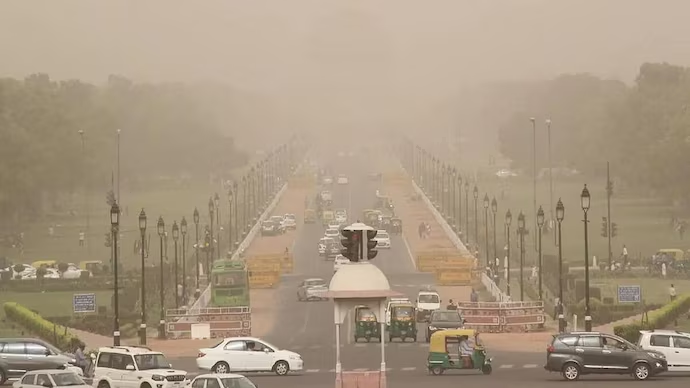Table of Contents
ToggleDelhi ‘tops’ list of world’s most polluted cities

Air pollution has become one of the greatest challenges of the 21st century, and in recent years, the issue has escalated to alarming levels. According to recent global air quality reports, Delhi has once again topped the list of the world’s most polluted cities. This concerning ranking not only highlights the severity of environmental degradation in India’s capital but also underscores the broader crisis faced by urban centers worldwide.
Why Delhi Tops the List
Delhi has battled toxic air for over a decade, but recent measurements have shown a steep rise in particulate matter concentration, especially during the winter months. Factors such as vehicular emissions, industrial activities, dust from construction, and the burning of crop residue in neighboring states contribute to dangerously high levels of PM2.5 and PM10 particles. These fine particles penetrate deep into human lungs, causing respiratory diseases, heart problems, and other long-term health issues.
Adding to the crisis, geographical and weather conditions trap pollutants in the city’s atmosphere, making it difficult for the smog to disperse. This combination of human activity and natural trapping has pushed Delhi into the unfortunate position of being ranked at the top among polluted cities.
The Health Emergency
The World Health Organization has repeatedly warned about the consequences of prolonged exposure to high levels of air pollution. In Delhi, the situation has reached the stage of a public health emergency. Schools are often forced to shut down due to toxic air, outdoor activities are discouraged, and hospitals report a sharp rise in patients suffering from breathing difficulties during peak pollution seasons.
Children and the elderly are particularly vulnerable. Studies have shown that children growing up in Delhi are at risk of reduced lung capacity, while adults face increased chances of chronic bronchitis, asthma, and cardiovascular diseases. This places a heavy burden on healthcare systems and affects the quality of life for millions of residents.
The Economic Cost
Beyond the devastating health impact, pollution in Delhi has a direct effect on the economy. The frequent closure of schools, offices, and construction projects leads to a loss in productivity. Tourism, which is a significant source of income for the city, also takes a hit as international visitors are wary of traveling to a city shrouded in smog.
The World Bank estimates that air pollution costs countries billions of dollars every year in lost labor, reduced agricultural yield, and healthcare expenses. As Delhi continues to remain at the top of polluted cities rankings, India faces the challenge of balancing economic growth with sustainable development.
Global Context of Polluted Cities
While Delhi garners global attention, it is not alone in this struggle. Several other Asian cities including Lahore, Dhaka, and Karachi often find themselves in the top rankings of polluted cities. Rapid urbanization, industrial expansion, and weak enforcement of environmental laws have contributed to deteriorating air quality in these regions.
Outside Asia, cities in Africa, the Middle East, and even parts of Europe face pollution challenges. However, South Asia remains the most critically affected region, where hundreds of millions of people are exposed to unhealthy air daily. This global perspective shows that polluted cities are not just a local issue but part of a worldwide environmental and public health crisis.
Government Response and Policy Measures
The Indian government has introduced multiple initiatives to combat the crisis. The National Clean Air Programme (NCAP) aims to reduce air pollution levels by up to 30% by 2024 through stricter regulations, better monitoring systems, and sustainable urban planning. Measures such as restrictions on firecrackers, bans on stubble burning, and promotion of electric vehicles are steps in the right direction.
However, critics argue that enforcement remains inconsistent. Corruption, lack of awareness, and inadequate infrastructure continue to hinder progress. For Delhi to move out of the top rankings of polluted cities, strong political will and cooperation between neighboring states will be essential.
Role of Technology and Innovation
Technology can play a crucial role in tackling pollution. Air quality monitoring apps now provide real-time data to citizens, helping them make informed choices about outdoor activities. On a larger scale, innovations like air purifiers for urban spaces, green building designs, and renewable energy adoption are gradually changing the environmental landscape.
Electric mobility is gaining traction, with both government and private players pushing for a shift away from fossil fuels. Renewable energy projects such as solar and wind power are being promoted as sustainable alternatives. These efforts may not yield immediate results, but they pave the way for cleaner cities in the future.
Public Awareness and Civic Responsibility
While government action is vital, citizens also play a role in addressing the crisis. Public awareness campaigns encourage people to reduce the use of private vehicles, opt for carpooling, and support waste segregation to minimize burning of garbage. Urban greenery drives, rooftop gardens, and eco-friendly construction practices are also gaining momentum.
Community engagement is essential, as the fight against air pollution requires both top-down policies and grassroots participation. Individuals taking small steps collectively can create significant change and help push Delhi and other polluted cities towards a healthier environment.
The Way Forward
The challenge of air pollution is massive, but it is not insurmountable. Learning from international examples, such as Beijing’s successful reduction in smog levels through strict enforcement and green technologies, Delhi can implement comprehensive policies that prioritize public health over short-term economic gains.
International cooperation is also crucial. Since air pollution often transcends borders, collaborative initiatives between South Asian countries can lead to regional solutions. Sharing data, resources, and technology can accelerate progress and help reduce the number of highly polluted cities on global rankings.
Conclusion
Delhi’s ranking at the top of the world’s most polluted cities list is a wake-up call for policymakers, citizens, and the global community. It highlights the urgent need for sustainable urban development, stricter environmental laws, and collective responsibility. While the path ahead is challenging, solutions do exist—ranging from technology and innovation to public participation and international cooperation.
Unless urgent measures are taken, polluted cities like Delhi will continue to threaten human health, economic growth, and the planet’s future. But with determination and coordinated action, there is still hope for cleaner skies and healthier generations to come.
